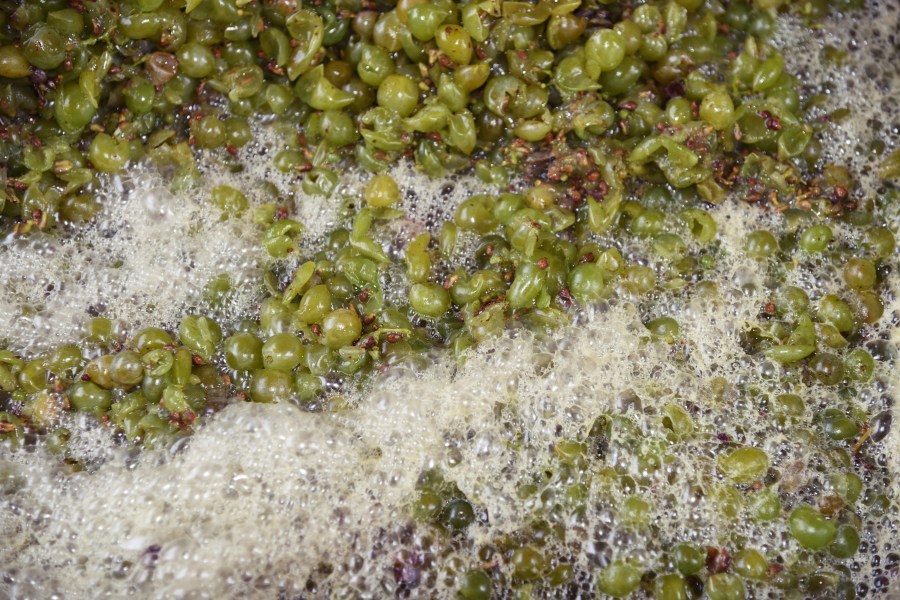Deciding the best approach for microbial control for harvest.
Microbial control is one of the most critical factors in the production of quality wines. During harvest, winemakers are most interested in reducing wild yeast/bacteria and spoilage organisms from the vineyard before alcoholic fermentation begins. Winemakers today have two main approaches to handle this: the classic approach with sulphur dioxide (SO2) and a more innovative bioprotective approach.
SO2 – classic approach
Sulphur dioxide has long been the antimicrobial and antioxidant of choice for winemakers, and it still is one of the most important preservatives used in winemaking today. From an antimicrobial standpoint, SO2 controls the growth of microorganisms that can damage wine quality. This is mainly due to its molecular form, whose concentration depends on the free sulphur content, pH, temperature, and alcohol content. SO2 is effective in controlling both yeast and bacteria by interfering with the microbes’ metabolism in many ways. Every microorganism has a different sensitivity to SO2; therefore, the quantity necessary to block growth is species-dependent.
Depending on the winemaker’s approach and fruit quality, SO2 may still be the best option. In this case, products that contain a blend of SO2 along with other antioxidant sources like ascorbic acid and gallic tannin, such as the Enartis product AST, are especially useful. These three components work synergistically to provide microbial and antioxidant control during grape transport and to remediate compromised fruit infected with Botrytis cinerea.
Alternatives to SO2 use – bioprotection approach
While it is easy to understand why sulphite additions are a useful tool, winemakers are working towards limiting their use, both in response to market demand and to expand their approaches in vinification. Another important aspect to consider is climate change; in recent vintages, there has been a trend towards higher pH levels in must and wine. This consistent rise in pH comes with lower effectiveness of SO2, requiring higher doses of sulphites. Reducing the use of SO2 has multiple benefits, and because of recent innovations in oenological products, winemakers now have the tools to combat unwanted microbes using bioprotection methods. Bioprotection includes the use of biological control agents and nature-based substances to reduce microbial populations and ensure a healthy environment for alcoholic fermentation.
Chitosan is a natural polysaccharide produced from Aspergillus niger, displaying various bioactive and antimicrobial activities depending on its activation during production. For the harvest period, Enartis offers EnartisStab Micro M, an allergen-free and vegan-friendly bioregulator containing activated chitosan and yeast hulls rich in chitin-glucan. It is specifically developed for the treatment of turbid musts and wines. Its powerful antimicrobial activity depends on the pre-activation process used by Enartis during production. This pre-activation activity involves increasing the positively charged surface of the chitosan, which interferes with the negatively charged residues on the microorganism’s cell membrane surface and thereby alters its membrane permeability, resulting in cell death. On grapes, in the juice pan, in must, and during cold soak, EnartisStab Micro M reduces wild yeast and bacteria populations, thus limiting volatile acidity and other off-flavour production. Its use before and even during fermentation results in cleaner fermentations while also allowing winemakers to use lower SO2 amounts due to its microbial and antioxidant capacity.
New from Enartis and available this harvest is another bioprotection tool that involves the use of living organisms: non-Saccharomyces yeast (Metschnikowia pulcherrima). Developed by The Centre of Excellence for Research in Microbiology (CERM), EnartisFerm Q MCK naturally protects red, white, and rosé must from microbial contamination during harvest (on grapes), pre-fermentative stages like static clarification, flotation, cold soak/extended maceration, or stabulation. In situations where winemakers have great fruit quality, it allows for the extraction of the grapes’ full aromatic and colour potential.





